How to plant tomatoes?
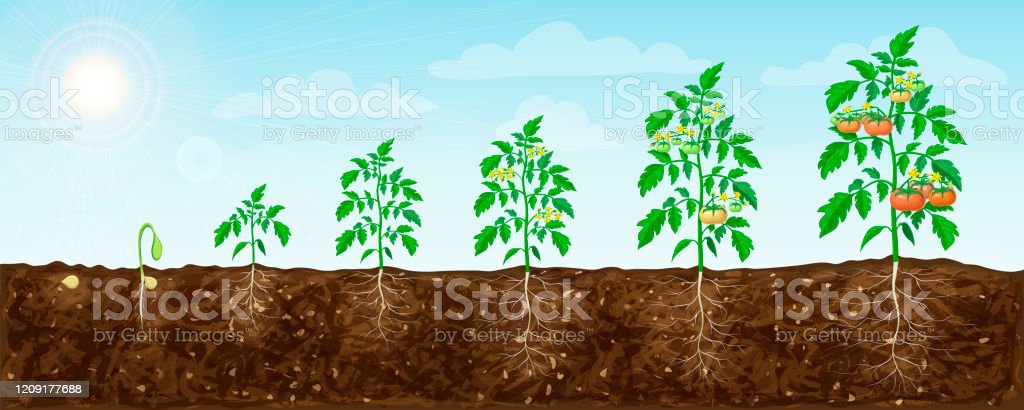
Introduction
One of the most well-liked vegetables or, technically, fruits to produce in a backyard garden is the tomato, and for good reason. They are highly adaptable in the kitchen, bringing vibrant colour and flavour to a variety of foods. The thrill of picking a ripe, juicy tomato right off the vine in your backyard is also unmatched.
You’ve come to the right place if you want to cultivate your own tomatoes but aren’t sure where to begin. Detailed instructions on planting tomatoes successfully are provided in this blog post, along with advice on tomato companion plants that can enhance growth and output. This article will arm you with the information and self-assurance you need to begin raising your own delicious tomatoes at home, whether you’re an experienced gardener or a novice..
Choosing Tomato Plants and Location
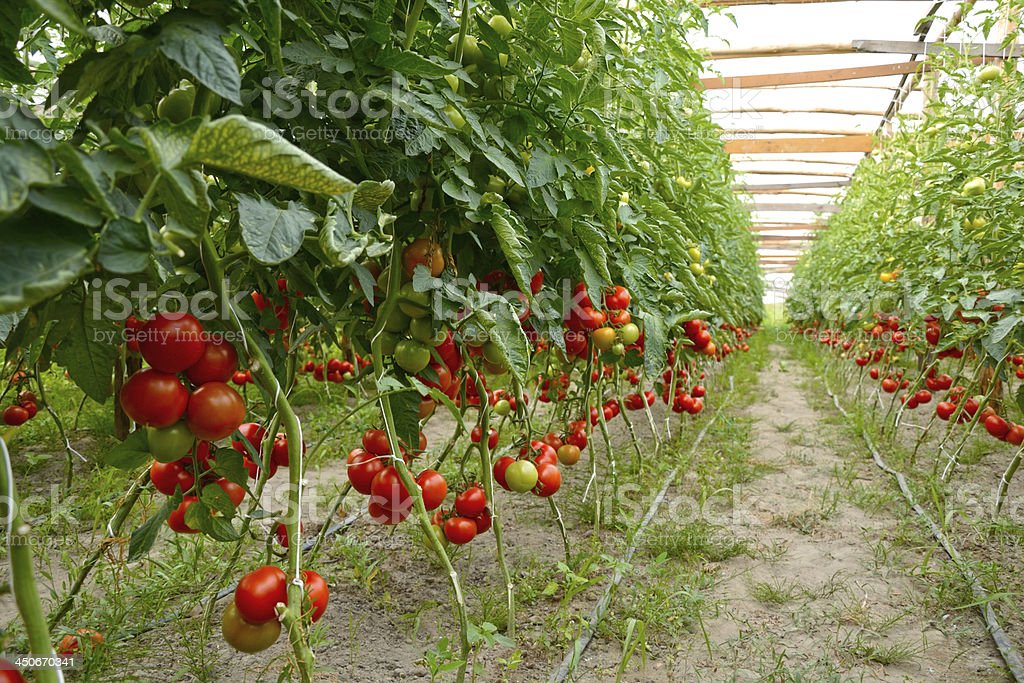
There are a few things to think about while choosing tomato plants for your yard. Consider the type of tomato plant you wish to grow first. Deciduous and undetermined are the two main categories. While indeterminate plants can grow extremely tall and produce fruit continually throughout the season, determinate cultivars typically are more compact and produce their fruit all at once. There are also heirloom and hybrid kinds, each with special qualities of their own.
The size of the plant (dwarf or normal), disease resistance, and growth circumstances are other elements to take into account. Make sure to find a spot for your tomatoes that has well-draining soil and at least six hours of direct sunlight per day. Moreover, tomatoes require regular moisture, so pick a spot that is convenient for watering.
It’s crucial to select the appropriate tomato plants, but companion plants should also be taken into account. While some plants, like fennel and potatoes, should be avoided because they might attract pests and diseases, others, like basil and marigolds, can help your tomato plants develop and produce more.
You’ll increase your chances of growing strong, fruitful tomato plants by taking the time to thoughtfully select your tomato plants and their location.
Preparing Soil and Fertilizing
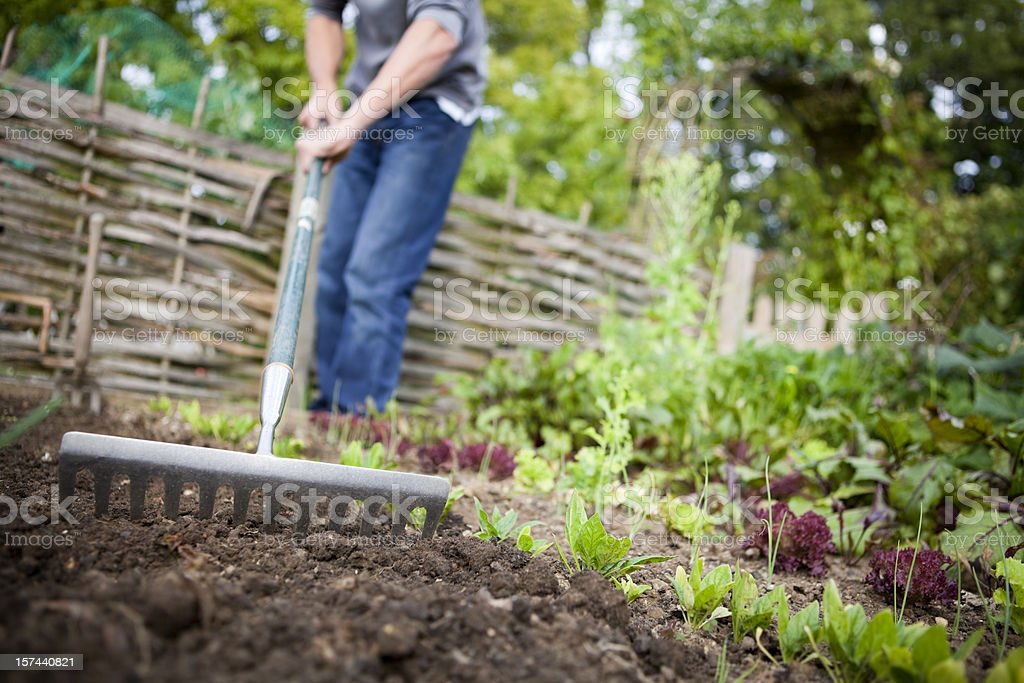
It’s crucial to prepare the soil before planting your tomato plants. With a soil testing kit, which is readily available at most garden centres, start by determining the pH values of your soil. In order to grow tomatoes, your soil should have a pH between 6.0 and 6.8. If it’s too alkaline, you’ll need to add some sulphur to bring it down.
Next, enrich your soil with organic matter to increase its fertility and texture. Peat moss, aged manure, and compost are all suitable choices. Organic matter should be applied to the soil in a layer of 2-3 inches and worked in to a depth of 6-8 inches.
The moment has come to consider fertiliser your tomato plants after your soil has been prepared. Tomatoes don’t need much fertiliser, but they do benefit from routine applications of a balanced fertiliser. Use fertiliser that has a nitrogen-phosphorus-potassium (NPK) ratio of 5-10-10 or 10-10-10 and apply it as directed on the container.
There are organic alternatives to conventional fertilisers, such fish emulsion and compost tea. They can be an excellent option if you want to keep synthetic chemicals out of your garden.
Water your tomato plants well and frequently, but be careful not to overwater them. While too little water might cause the plants to wilt and yield tiny fruit, too much water can result in root rot. Water early in the day to give the leaves time to dry before dusk and maintain the soil uniformly moist but not soggy.
You can give your tomato plants the nutrition they need to grow strong and healthy by taking the time to properly prepare your soil and fertilise them.
Planting Your Tomato Plants
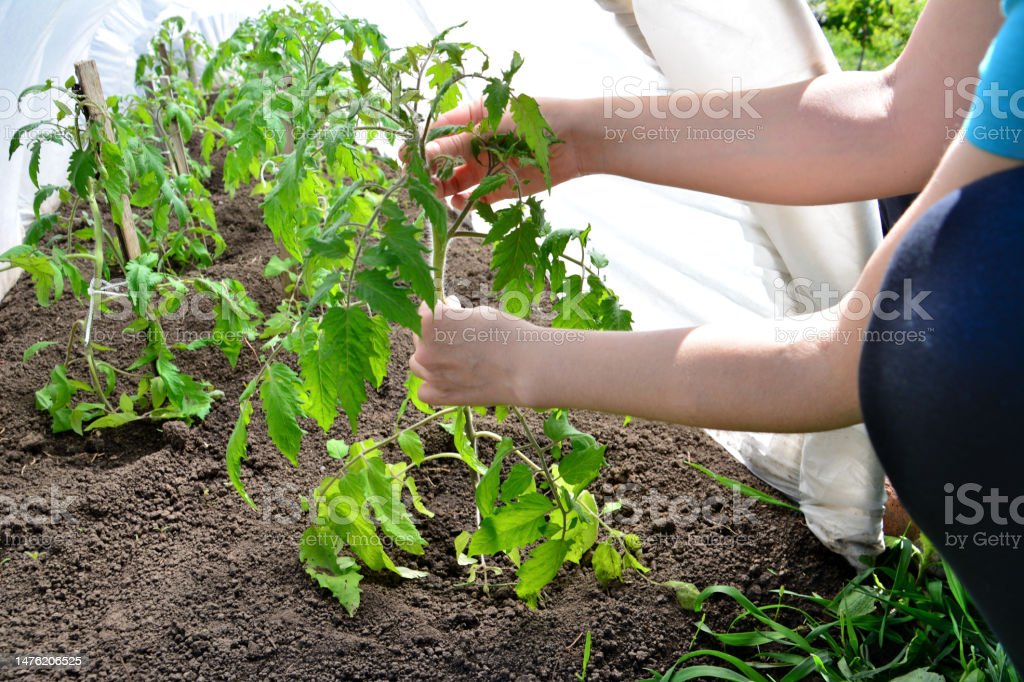
It is now time to plant your tomato plants after fertilising and preparing your soil. Start by excavating a hole that is both broad enough to accommodate the roots and deep enough to completely enclose the plant’s root ball. Place the plant in the hole after carefully removing it from its container so as not to injure the roots. To remove air pockets, backfill the hole with soil and pack it down firmly.
Your tomato plants need to be properly spaced to provide for adequate airflow and to stave off illness. Tomato plants should typically be planted in rows that are 3–4 feet apart, spaced 18–24 inches apart. You might need to provide poles or cages to support the plants as they grow if you’re planting indeterminate kinds.
Give your tomato plants a vigorous watering after planting to help the soil settle and lessen transplant shock. To help the plants retain moisture and control weeds, you might also want to think about spreading a layer of mulch around them.
Keep an eye out for any symptoms of disease or pests as your tomato plants develop, and take quick action to stop them from spreading. Your plants’ airflow and danger of disease can both be improved by routinely trimming and staking them.
You can give your tomato plants the best possible start and prepare them for a productive growth season by using these planting advice.
Caring for Your Tomato Plants
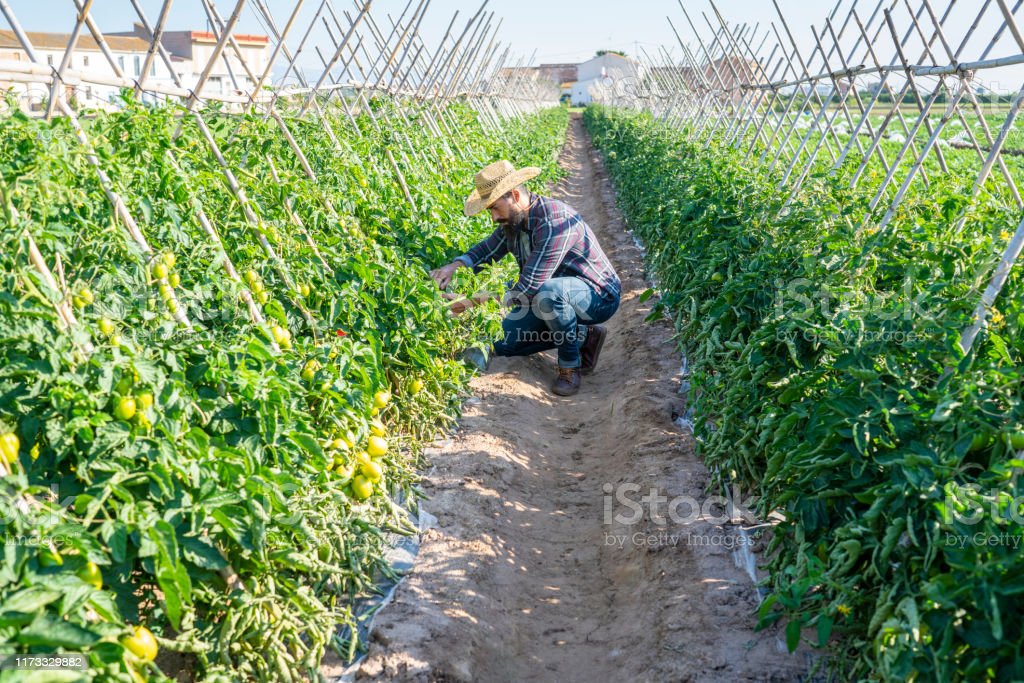
You must do more than just plant and water your tomato plants to properly care for them. Throughout the growing season, you will need to give continual care and attention to ensure healthy growth and a plentiful harvest.
Pruning is a crucial part of tomato plant maintenance. In order to do this, suckers—tiny shoots that emerge between the main stem and the branches—must be removed. By removing suckers, you can increase ventilation, light penetration, and the plant’s tendency to concentrate its energy on fruit development rather than vegetative growth. To remove the suckers as they appear, use a sharp pair of pruners or your fingers.
Regular fertilising is another important component of tomato plant maintenance. Your plants will require more nutrients as they expand to sustain their growth and fruit production. A balanced fertiliser should be applied every 4-6 weeks, ideally, or as directed by the fertilizer’s manufacturer.
The entire growth season requires constant watering for tomato plants. You may need to water your plants more frequently to keep the soil evenly moist if you live in a region with dry summers. Water should not be applied to the leaves as this can promote illness.
You might need to add more support as your plants start to develop fruit to keep the heavy fruit from bringing the branches crashing to the ground. Your plants can be kept upright and the risk of broken branches decreased by staking or caging them.
Finally, keep an eye out for common pests and diseases that affect tomato plants, including aphids, whiteflies, and early blight. Take quick action to stop the issue from spreading if you observe any warning signs, such as yellowing foliage or spots on the fruit.
Your tomato plants will benefit from regular care and attention, which will promote a robust, fruitful growing season and a plentiful harvest of succulent, juicy tomatoes.
Choosing Tomato Plant Companions
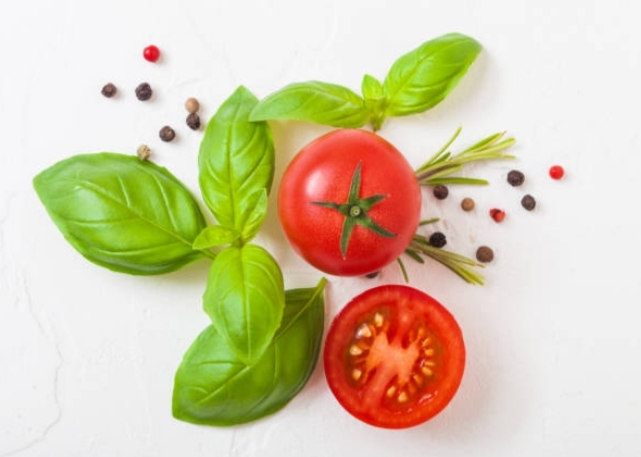
The health and productivity of your tomato plants can be greatly enhanced by selecting the best companion plants to grow alongside them. Growing two or more plants together that have comparable growth patterns, soil requirements, and pest-repelling qualities is known as companion planting.
Basil is a common tomato companion plant. When planted close by, basil not only deters pests like aphids and tomato hornworms but also improves the flavour of tomatoes. Marigolds, which deter worms and other pests, and chives, which deter aphids and attract beneficial insects, are other plants that make excellent tomato companions.
Make sure to take into account the companion plants’ soil needs and growth patterns when selecting them for your tomato garden. Growing lettuce and spinach next to tomatoes can be a good idea because they won’t compete with the tomatoes for nutrition. These plants have shallow root systems. To prevent overshading the tomatoes, make sure to provide enough space between tall plants like sunflowers and maize that can give shade and support for tomato plants.
A diversified and aesthetically pleasing garden can also be produced with the use of companion planting. To draw pollinators and give some colour to your tomato patch, think about incorporating some blooming plants like zinnias or nasturtiums.
You can increase the health and productivity of your tomato plants while also making a lovely and useful garden by picking the correct plant companions.
Troubleshooting Common Tomato Plant Problems
Despite your best efforts, growing tomato plants may present you with a few frequent issues. Here are some recommendations for troubleshooting some of the most typical problems:
- Blossom end rot: The bottom of the tomato frequently becomes leathery and black due to this issue. It is brought on by a calcium deficit, which may be brought on by insufficient calcium in the soil or by uneven watering. Water your plants frequently and use a calcium-rich fertiliser to prevent blossom end rot.
- Early blight: It is a fungus that causes the fruit to develop dark blotches and yellowing leaves. Avoid overhead watering, which can spread the disease, and make sure your plants are sufficiently spaced enough to promote excellent ventilation to prevent early blight. A fungicide can also be used to stop the disease from spreading.
- Tomato hornworms: These enormous, green caterpillars have a voracious appetite for tomato plants. Pick tomato hornworms off by hand or use an organic insecticide like Bacillus thuringiensis to get rid of them (BT).
- Aphids: By consuming the leaf sap, these tiny insects can quickly reproduce and harm tomato plants. Use a forceful water spray to force aphids off the plant, insecticidal soap, or neem oil to get rid of them.
Conclusion
With a little forethought and care, you may reap a plentiful harvest of delectable, homegrown tomatoes. Raising your own tomatoes can be a pleasant and enjoyable experience. To develop healthy and fruitful plants, there are numerous steps to take, from selecting the best kind and preparing the soil to planting, watering, and harvesting your tomatoes.
You’ll be well on your way to cultivating your own juicy and flavorful tomatoes by paying attention to the suggestions and guidance in this manual. Don’t forget to select the ideal tomato type for your needs, give your plants plenty of sunlight and water, fertilise them frequently, prune them, and keep an eye out for typical tomato plant issues.
You’ll soon be reaping the benefits of your labour with a little perseverance and patience. So don your gardening gear, roll up your sleeves, and get ready to raise some tasty tomatoes!
Frequently Asked Questions
- When is the best time to plant tomatoes?
Your location and climate will determine when to plant tomatoes. Tomatoes should typically be planted after your region’s last date of frost and after the soil has warmed to at least 60°F (15.5°C).
- How often should I water my tomato plants?
Water tomato plants thoroughly and frequently, at a rate of 1-2 inches (2.5–5 cm) each week. Depending on the weather and the state of the soil, the watering schedule may change. Overwatering must be avoided because it can cause root rot.
- Do tomato plants need to be fertilized?
Yes, fertilising tomato plants is necessary to promote healthy growth and a plentiful yield. Use a fertiliser made specifically for tomatoes, or a balanced fertiliser like a 10-10-10 combination. Make sure to adhere to the fertiliser package’s instructions.
- What can I plant with my tomato plants as companions?
Carrots, basil, marigolds, parsley, and marigolds are a few healthy tomato mates. These flowers can keep pests away from your garden while luring beneficial insects.
- How can I prevent common tomato plant problems?
Make sure to plant tomatoes in well-draining soil, provide plenty of sunlight and water, and practise excellent sanitation by eliminating dead or diseased plant material in order to avoid typical tomato plant issues. Also, you can utilise organic or natural pest management techniques, such as companion planting, neem oil, or insecticidal soap.

